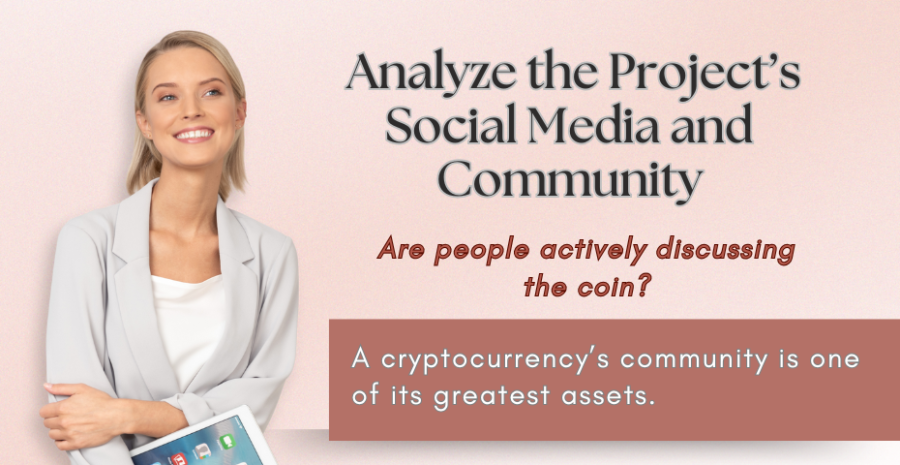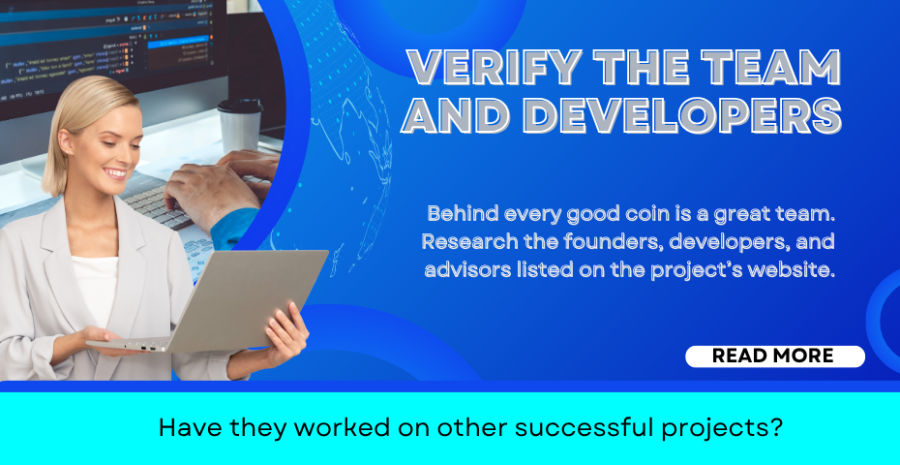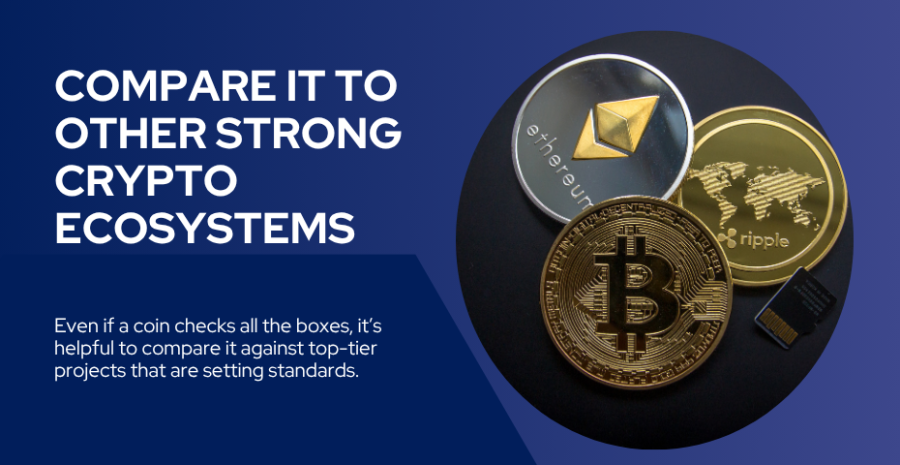
How to Study a Crypto Coin: A Smart Investor's Guide to Evaluating Cryptocurrencies.

The world of cryptocurrency has evolved far beyond Bitcoin and Ethereum. With thousands of coins in circulation, knowing how to evaluate a cryptocurrency before investing is no longer optional—it’s essential.
Whether you're a curious beginner or a seasoned investor looking to diversify your portfolio, understanding how to study a crypto coin is your first line of defense against hype, scams, and poor decisions.
The digital gold rush has attracted not only innovative minds but also opportunists looking to exploit the uneducated. That’s why doing your own research (DYOR) is more than a cliché in the crypto space—it’s survival.
The challenge is that many coins appear flashy on the surface. Slick websites, clever marketing, and promises of overnight wealth lure in investors. But real value lies underneath the surface—in the tech, the team, the community, and the economic model behind the project.
Knowing what to look for (and what to avoid) can help you separate legitimate long-term projects from temporary hype machines. It’s not about guessing which coin will “moon” next—it’s about building a portfolio based on sound principles and smart evaluation.
So, how do successful crypto investors do it? They study coins like analysts. They dig into whitepapers, verify teams, analyze tokenomics, and explore the strength of each coin’s ecosystem.
They stay updated, avoid emotional decisions, and always ask: "Does this coin solve a real-world problem, and is it sustainable long-term?"
In this blog, you’ll learn how to evaluate any cryptocurrency through 8 proven strategies, and we’ll wrap it up by highlighting 6 of the best crypto ecosystems to watch in 2025/2026—starting with Markethive.

A legitimate cryptocurrency project begins with a strong foundation—and its website is the digital front door. It should be professional, clear, and up to date. Look for details like the project’s mission, features, roadmap, partnerships, and contact information.
A weak or outdated site is often a red flag. But beyond aesthetics, evaluate the substance. Does the website explain what problem the coin solves? Does it show transparency in leadership, tokenomics, and goals?
Can you find links to technical documents like the whitepaper, GitHub code, or media mentions? Legitimate projects use their websites as hubs of information, not just hype.
If it feels like a sales funnel or lacks clear utility, walk away. Remember, if a project can’t communicate clearly online, it likely won’t perform well in the market.

The whitepaper is the backbone of a cryptocurrency. It outlines the technology, goals, architecture, use cases, tokenomics, and overall vision of the project.
Think of it as the business plan for the crypto world. Read it closely. Ask: Is the whitepaper original or copied from another coin? Does it explain how the blockchain functions? Are there real-world problems it solves? Are the goals achievable and backed by logical reasoning?
Is there a clear plan for scalability, governance, and updates? Avoid projects with overly complex jargon that obfuscates meaning. A strong whitepaper is not only well-written—it’s backed by research, logic, and a deep understanding of blockchain innovation.
If you can’t explain the coin’s purpose after reading the whitepaper, don’t invest in it.

A cryptocurrency’s community is one of its greatest assets. Start by checking platforms like Markethive, X (formerly Twitter), Reddit, Telegram, and Discord.
Are people actively discussing the coin? Is there meaningful engagement or just bots promoting giveaways? Check how the developers interact with users.
Are they responsive and transparent, or silent and secretive? A healthy community offers a balance of hype and helpfulness. Look for evidence of growth, international adoption, and enthusiasm rooted in substance.
Watch out for overly aggressive marketing tactics, fake followers, or communities obsessed with price but clueless about tech.
The strongest coins have real tribes behind them—people passionate about the project, not just the profits.

Behind every good coin is a great team. Research the founders, developers, and advisors listed on the project’s website.
Are they doxxed (publicly identified) or anonymous? While anonymity isn’t always a deal-breaker, transparency builds trust.
Look up their LinkedIn profiles, past ventures, and blockchain experience.
Have they worked on other successful projects? Do they have a reputation in the tech or financial community? Are any of them involved in scandals or failed ICOs?
A project led by credible, experienced people with a clear vision is more likely to deliver long-term results.
Bonus points if they frequently publish updates or participate in interviews and events.
Avoid teams that hide behind avatars or offer little public presence—they often vanish when problems arise.

Tokenomics refers to how the coin is structured economically—how it’s created, distributed, and incentivized. Is there a limited supply or unlimited inflation?
What percentage of tokens is allocated to the team, early investors, and the community? If the team holds too large a share, it may indicate centralization or potential for price manipulation.
Check if the coin has real utility—can it be staked, used for governance, traded, or burned? Does it incentivize holding or using the token in a healthy way?
Good tokenomics promote stability, growth, and fairness. Bad tokenomics often lead to pump-and-dump behavior. Always tally the numbers.
Transparency in distribution is a major trust factor—and a sign that the coin values its users as more than just exit liquidity.

Looking at a coin’s price history gives insight into its performance under pressure. Use tools like CoinMarketCap or CoinGecko to analyze historical charts.
Has the coin consistently grown over time, or is it mostly volatile without pattern? Look at its all-time high and how it responded to market crashes.
Study volume metrics—are people actively trading the coin, or is it stagnant? Compare market cap, circulating supply, and liquidity.
High volume and strong market cap usually signal investor interest and broader trust. Also look at exchange listings—being on major exchanges adds credibility.
A coin that crashes easily under pressure or is only listed on obscure platforms may be too risky.
Price data reveals investor psychology—and helps you determine whether a project has staying power.

A coin isn’t just a token—it’s often part of a larger ecosystem. Evaluate what platforms or products the coin supports.
Does it have a wallet, NFT marketplace, metaverse utility, or DeFi platform? Strong coins are connected to ecosystems that create value and encourage long-term usage.
Look into partnerships: Are there collaborations with credible tech firms, universities, or governments? Are they building integrations or apps on top of their blockchain?
An active ecosystem means developers trust the coin’s foundation. It also shows momentum and innovation. Weak ecosystems with no integrations often indicate the project lacks vision or utility.
The more tools, platforms, and real-world use cases tied to the coin, the greater its potential for long-term relevance and growth.

Even if a coin checks all the boxes, it’s helpful to compare it against top-tier projects that are setting standards. Here are 6 cryptocurrencies expected to dominate the crypto landscape in 2025/2026 and beyond:
1. Markethive (HVC): A blockchain-driven social market network built for entrepreneurs, offering real utility with tools like email marketing, blogging, video hosting, and its own micropayment system. It's the perfect blend of social, commerce, and crypto — a must-watch.
2. Ethereum (ETH): The world’s leading smart contract platform with a robust ecosystem of dApps, DeFi, NFTs, and layer-2 scaling solutions like Arbitrum and Optimism.
3. Solana (SOL): Known for high-speed transactions and low fees, Solana continues to attract DeFi and gaming projects, strengthening its infrastructure.
4. Avalanche (AVAX): A scalable blockchain platform built for DeFi and enterprise applications, with subnets that offer custom blockchain creation.
5. Chainlink (LINK): The most trusted decentralized oracle network, enabling smart contracts to interact with real-world data securely.
6. Cosmos (ATOM): Focused on interoperability, Cosmos allows multiple blockchains to communicate and share data — a critical evolution for the crypto space.
Each of these coins offers more than hype—they provide infrastructure, developer support, and global community adoption.
Studying a crypto coin isn’t just a checklist—it’s a mindset. It’s about approaching every opportunity with curiosity, skepticism, and strategic analysis. In the fast-moving world of blockchain, emotions are your enemy and education is your armor.
By mastering the art of crypto evaluation, you avoid the common traps of pump-and-dump coins, vaporware promises, and social media hype. You begin to recognize the signals of true innovation, long-term potential, and community-driven ecosystems.
Remember, crypto is more than a trend—it’s a revolution. But not every coin is built to last. The difference between a lucky gamble and a life-changing investment lies in your due diligence.
The most successful investors don’t chase coins—they study them. They understand whitepapers, analyze tokenomics, verify teams, and assess utility with surgical precision. They’re not seduced by shiny websites—they’re anchored in strategy.
As 2025 and 2026 approach, the next generation of wealth will be shaped by those who understand the power of decentralization—and how to invest in it wisely.
Whether you choose Markethive for its entrepreneurial platform, Ethereum for its smart contracts, or Cosmos for cross-chain innovation, make your decisions from a place of knowledge. Crypto rewards the prepared, the patient, and the disciplined.
Build your strategy now, and you’ll thank yourself later.
Your time to thrive is now. One step at a time.
....................................................................................................................................................................................................
About: Andries vanTonder
Over 46 years selfemployed
He is a Serial Entrepreneur, an Enthusiastic supporter of Blockchain Technology and a Cryptocurrency Investor
Find me: Markethive Profile Page | My Twitter Account | My Instagram Acount | and my Facebook Profile.
